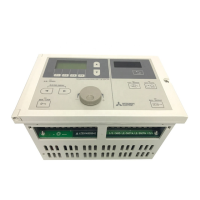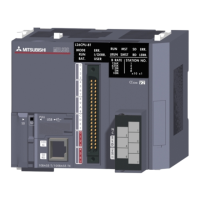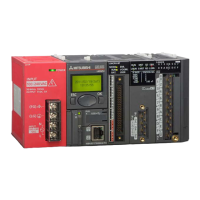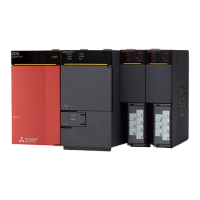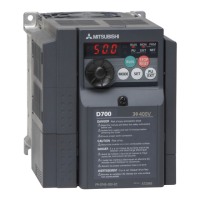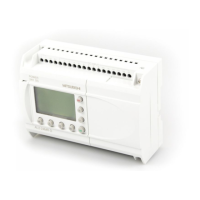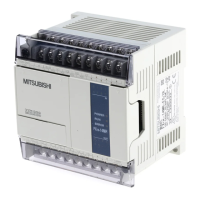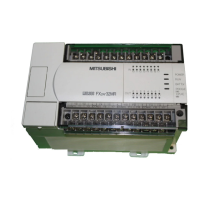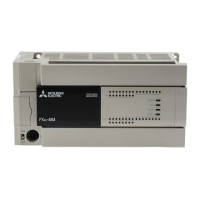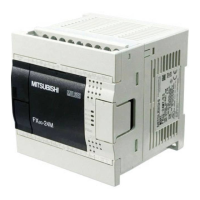44
10.4 Unintended operation
Check the abnormality of the major components during trial operation and adjustment and during actual op-
eration using the following procedure.
Item Problem Disposal
Power
supply
When the POWER
switch is turned ON,
the POWER LED is
not lit.
•
Make sure the supply voltage between the terminals [PSL] and [PSN] is
100 to 240VAC (+10% to -15%), 50/60 Hz. If this value is not correct,
perform the correct wiring.
•
The fuse may be melted by insertion of foreign objects or abnormal loads.
If simply replacing the fuse may not solve the problem. Contact our ser-
vice department.
Tension
display
and
abnormal
tension
On the display, the
tension value or the
unit of the tension
flashes.
•
The tension signal from the tension detector is too high. The applied
load may exceed the rated load of the tension detector. Lower the ten-
sion set value.
•
Check the rated load of the tension detector. If no problem is detected,
increase the full-scale tension value. (After changing the full-scale ten-
sion value, be sure to tune the zero point and the span.)
When restarting after
stopping the mate-
rial, the tension read-
ing goes beyond the
scale from the begin-
ning.
•
Turn ON or OFF the [MC1] input signal depending on the run/stop status
of the machine . If the [MC1] input signal is kept at on status, restarting
operation may send out the maximum control output, and an extremely
high tension may be applied.
•
When stopping the machine, if the turning-OFF timing of the [MC1] input
signal is delayed, the control output may be extremely increased, and
an extremely high tension may be applied at starting operation. To pre-
vent this problem, be sure to turn OFF the [MC1] input signal when
stopping the machine.
The output increases
while the machine
halts.
•
The [MC1] input signal may not be turned OFF.
•
While the machine is stopped, be sure to turn off the [MC1] input signal.
After replacement of
the material, an
extremely high or low
tension is applied.
•
Check that the output set for the OFF status of the [RUN] input signal is
optimum for the reel diameter of the replaced material.
•
Reset the stall memory.
Fluctuating tension
control
•
Check whether similar fluctuations occurs during manual operation.
•
Fluctiations during manual operatinon is generally caused by changes in
tension as a result of machine vibration ,mechanical loss,etc. In this
case please check the machine.
•
If fluctuations do not occur during manual operation, this is generally
caused by high control gain set by the LE-40MTA-E tension controller.
In this case, please adjust the control gain factor refer to Sec. 7.5.
Actuator
Output cannot be
obtained in the man-
ual mode.
•
Make sure that the OUTPUT ON/OFF switch is turned on.
•
When 0 to 24 V output is obtained between the terminals [P] and [N] by
the manual torque setting, check the wiring to the powder clutch/brake.
When no abnormality is detected , the clutch/brake is defective or se
lected inappropriately.
•
If the output voltage is not obtained in the no-load condition when the
power is changed from off to on ,the LE-40MTA-E is defective.
If the short-circuit protection function between the terminals [P] and [N]
is actuated, the unit becomes the normal condition when the wiring is
corrected and the power is turned on again.
•
If 0
~
5V output is not obtained between the terminals[SA] and [SN] and
the terminals [NRO] and [AOC], remove the external load (1k
Ω
or more)
and check whether 0
~
5V is obtained.
•
If 4
~
20mA output is not obtained between the terminals [EAP] and
[EAN] , remove the E/P regulator (470
Ω
or less),connect the ammeter
between the terminals [EAP] and [EAN] , then check whether 4
~
20mA
output is obtained.
•
While the memory cassette is attached, the control output is not gener
ated.

